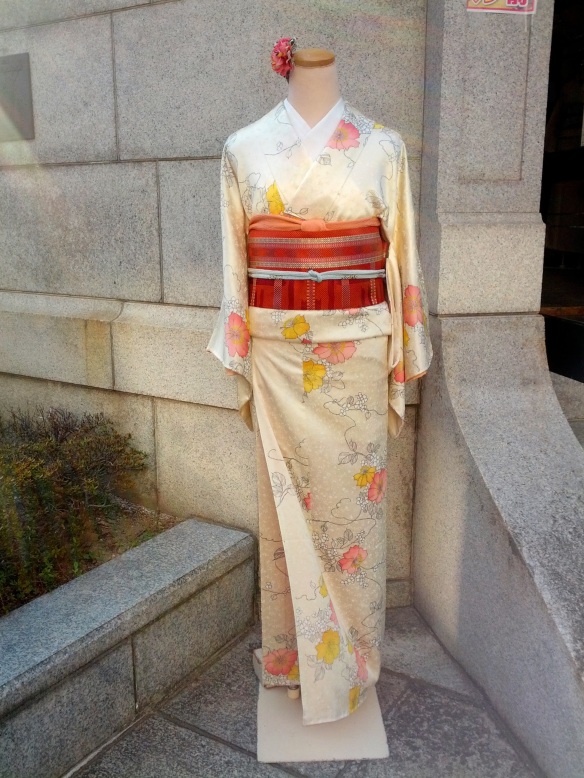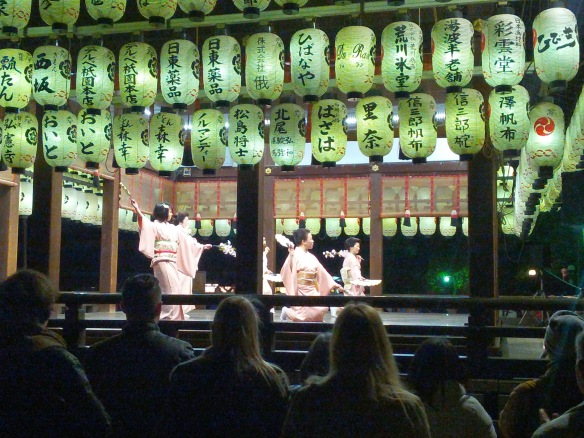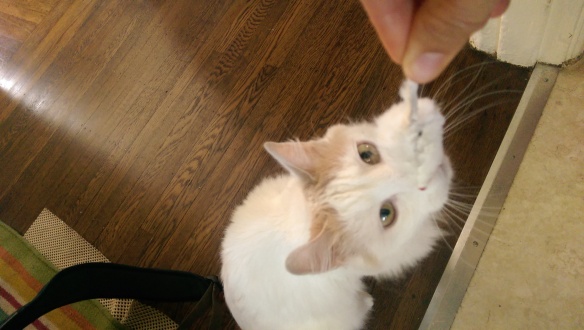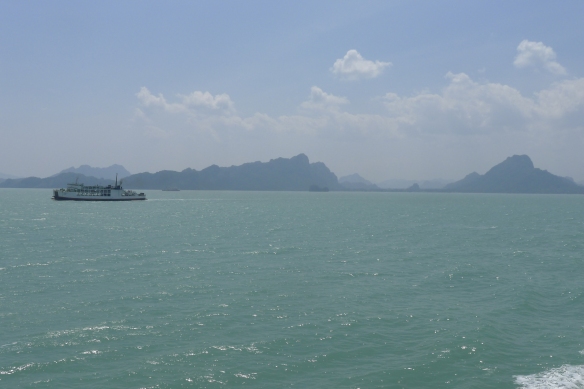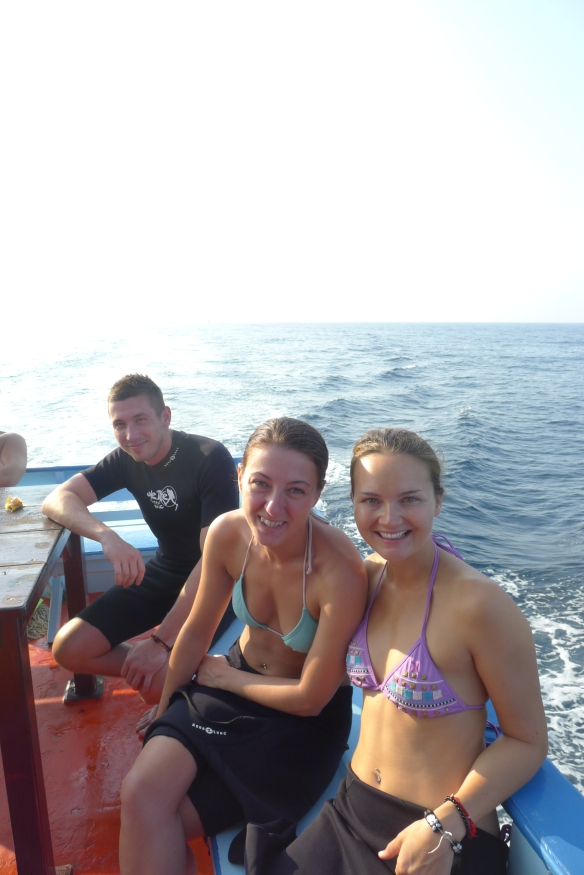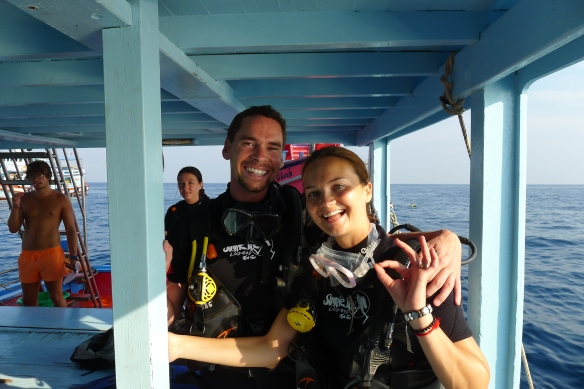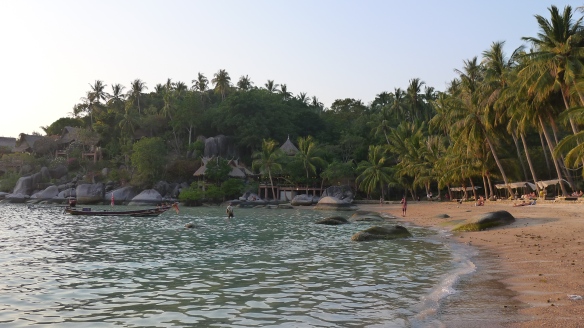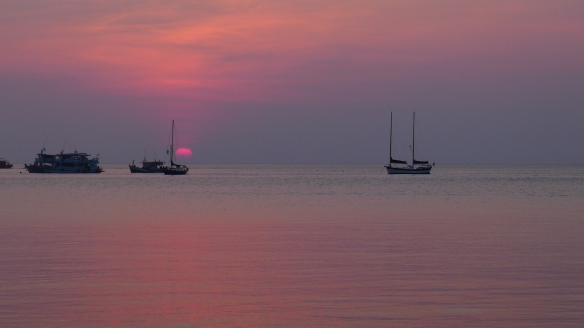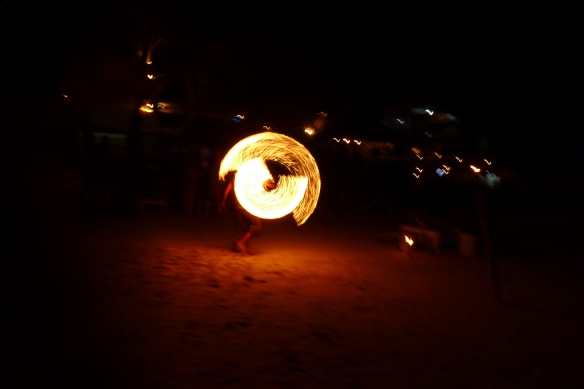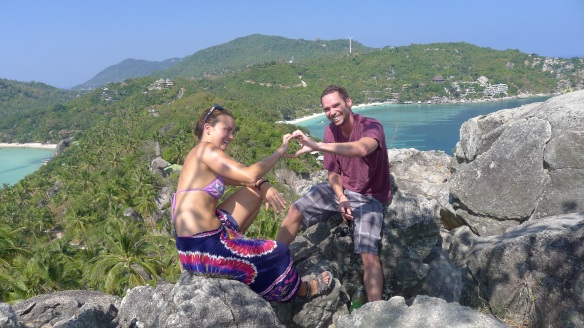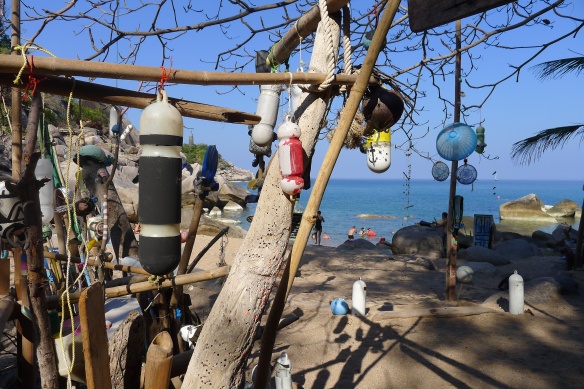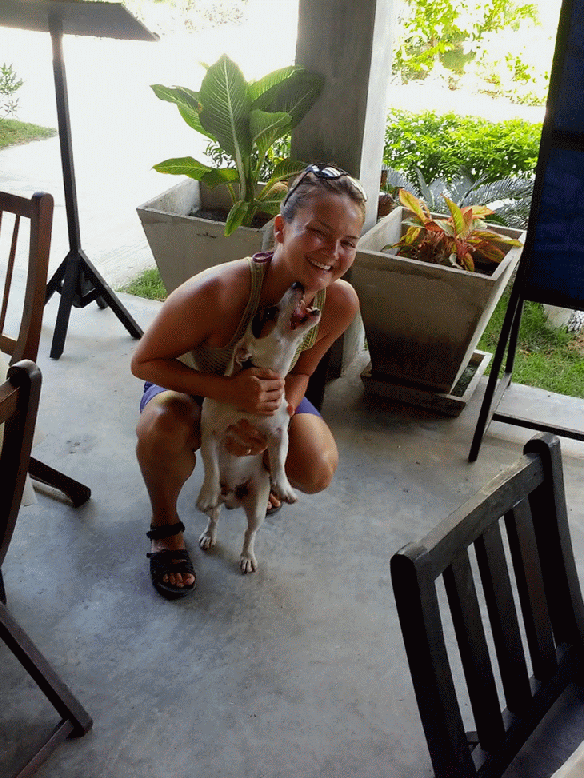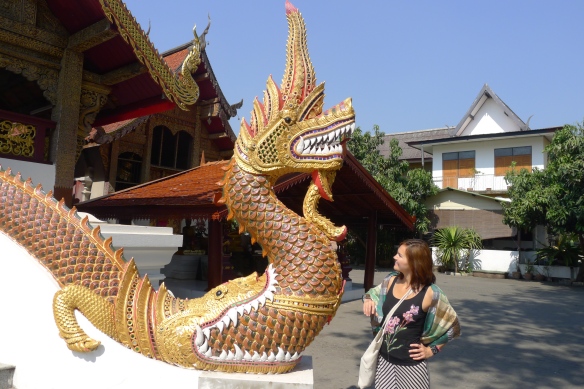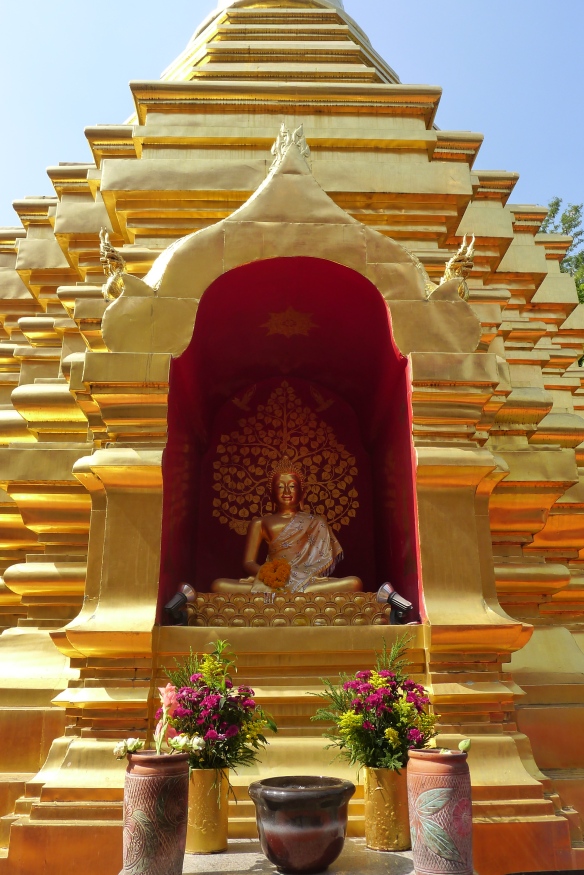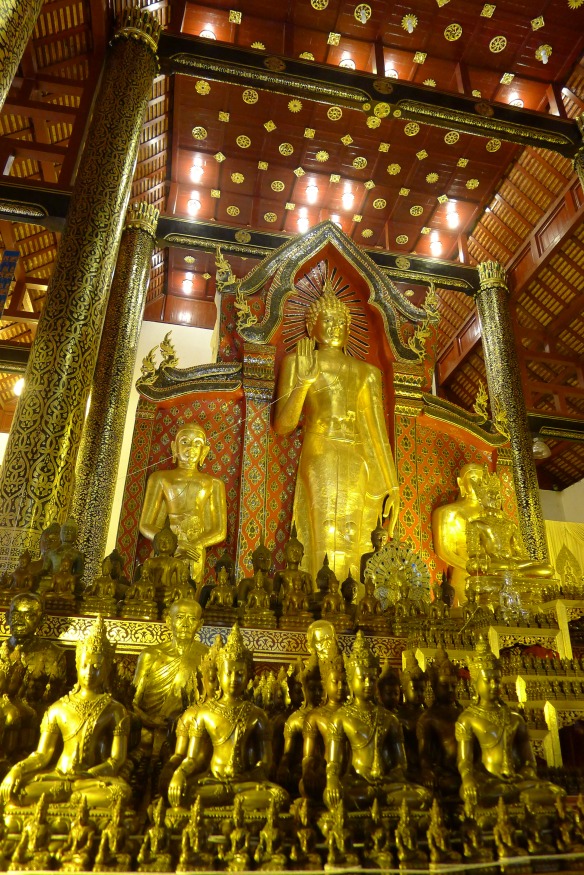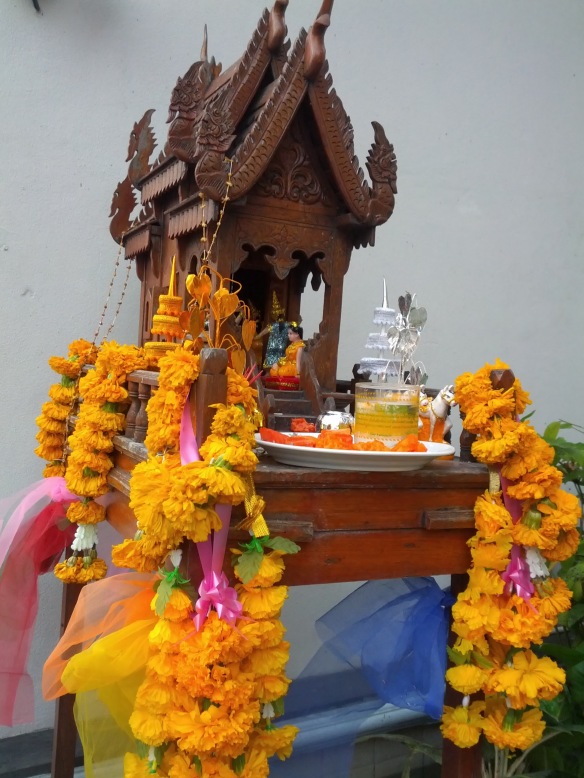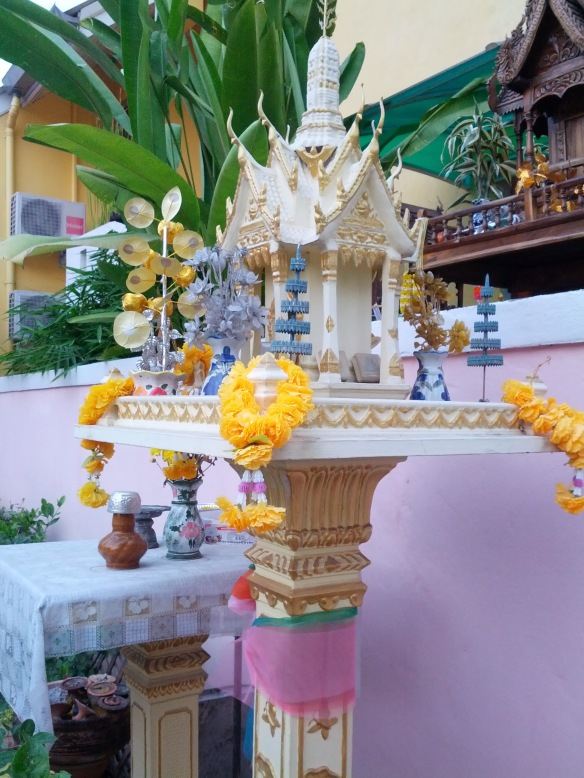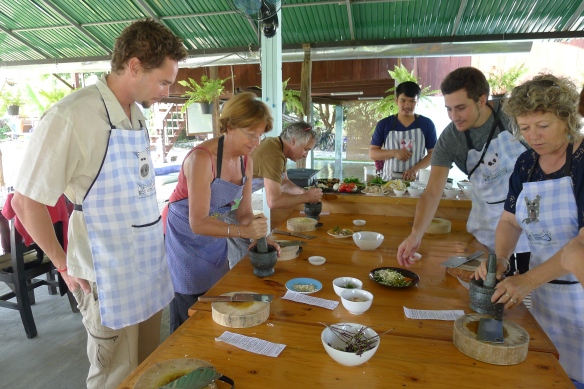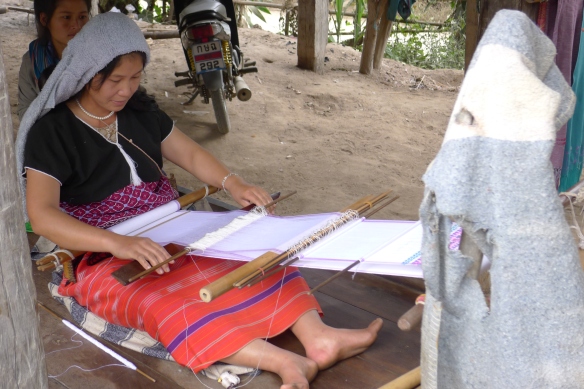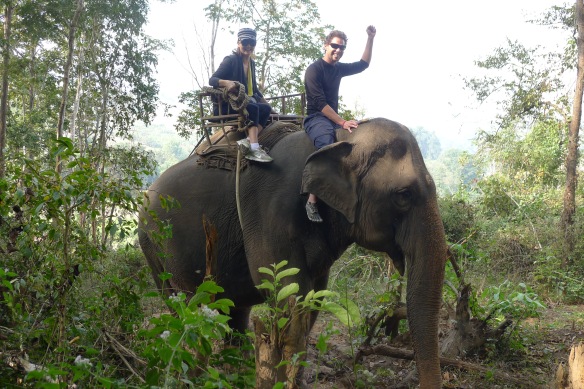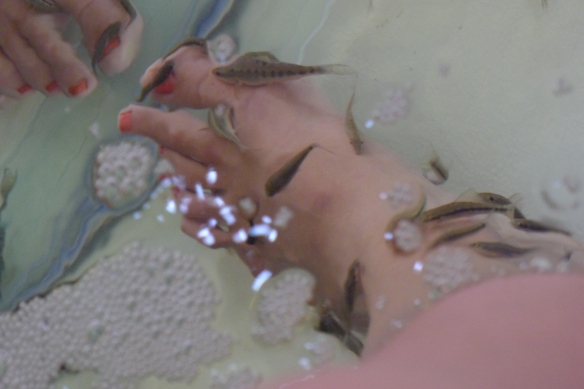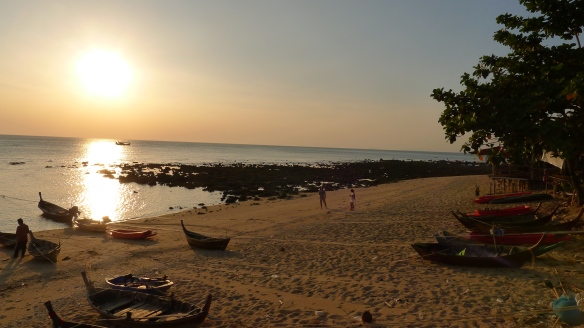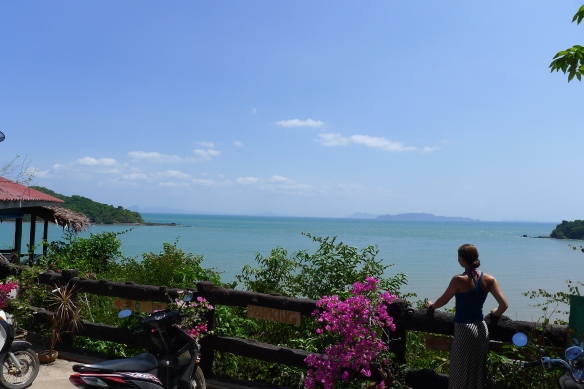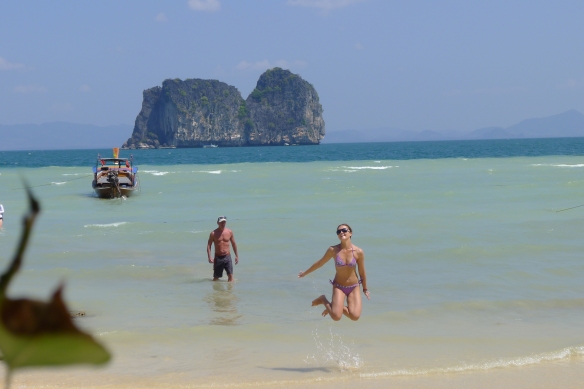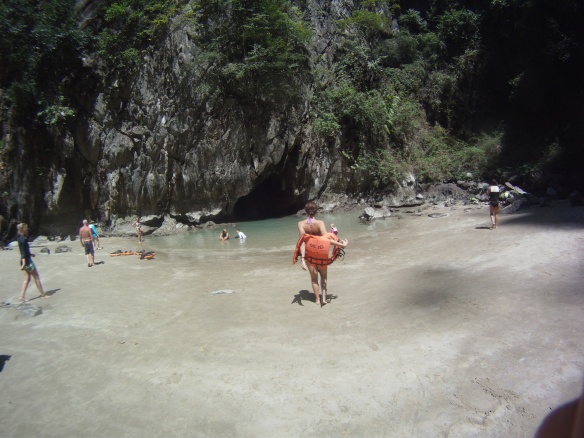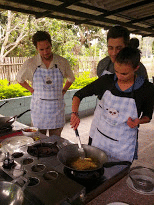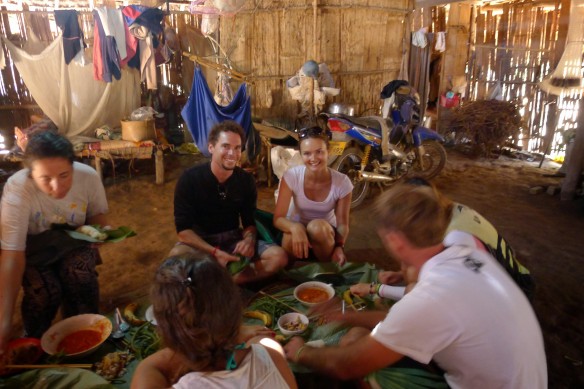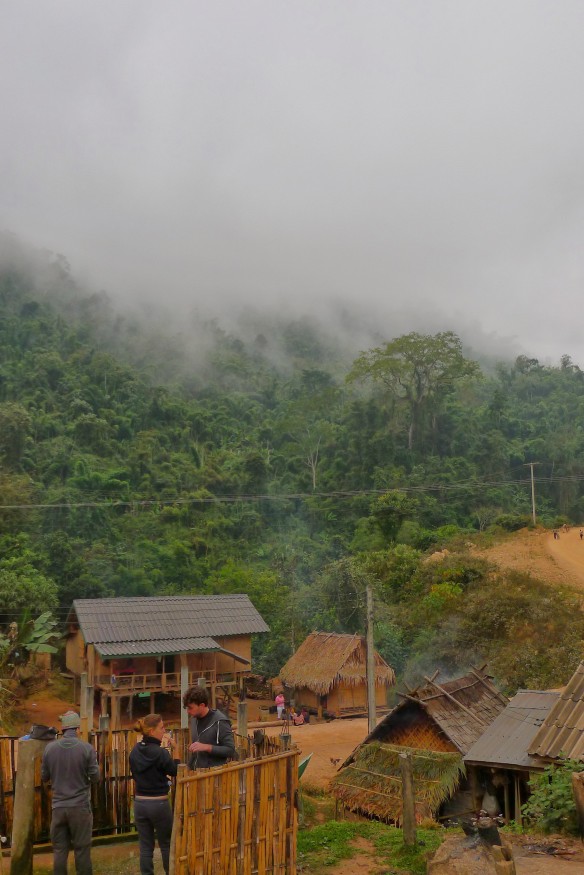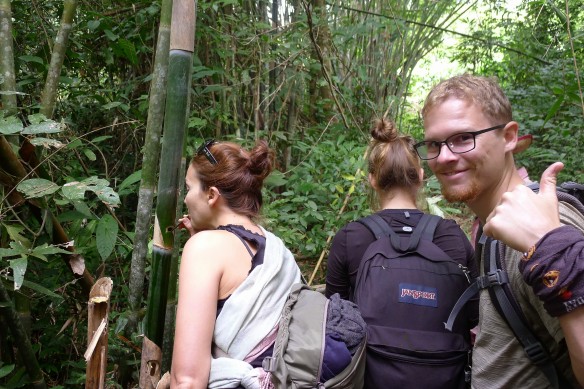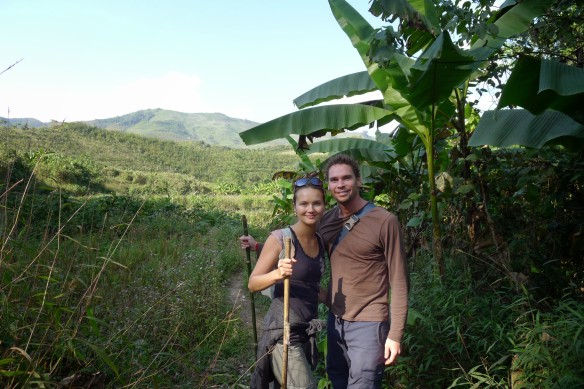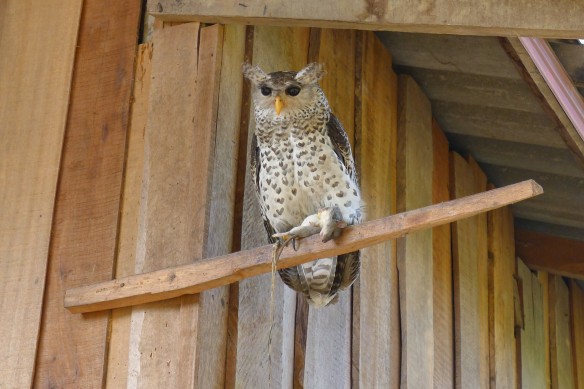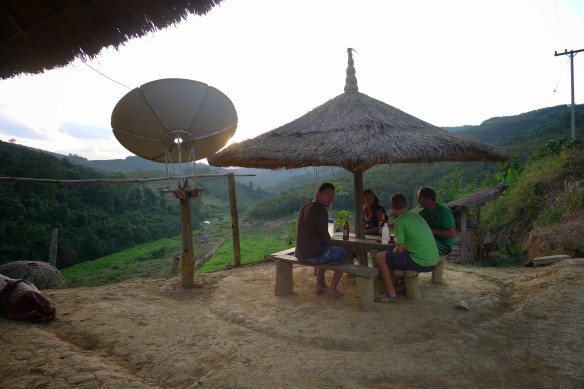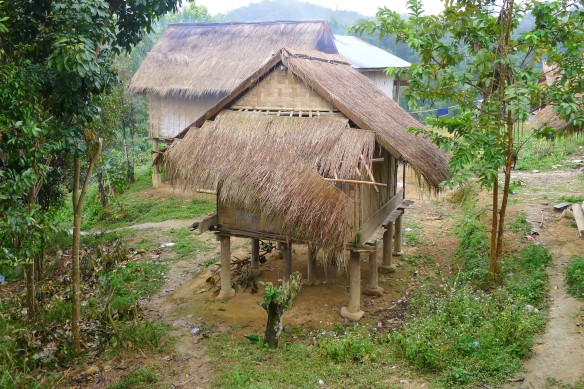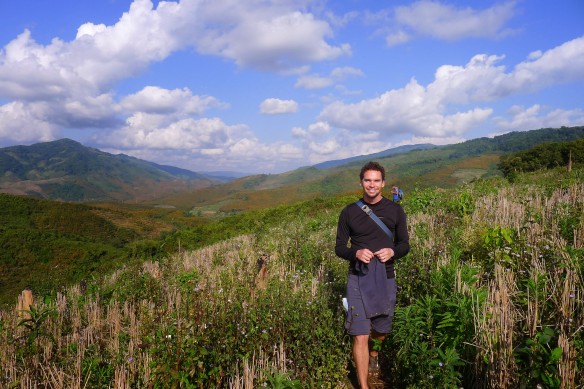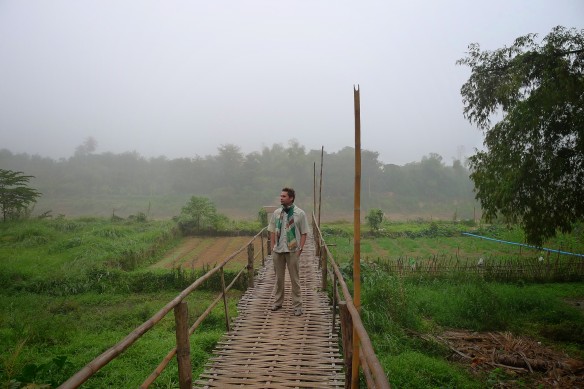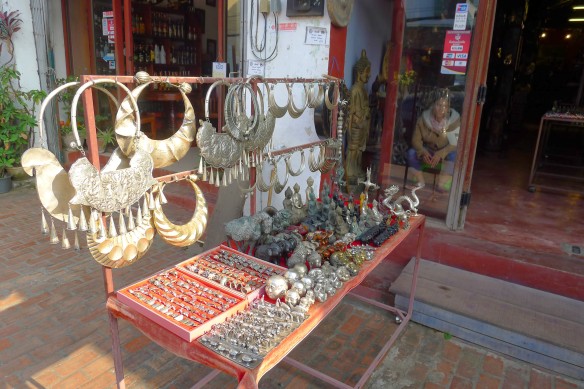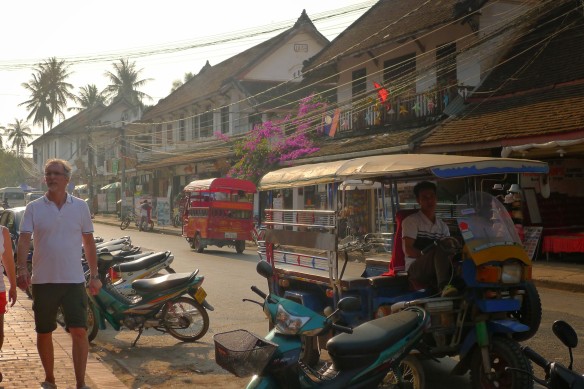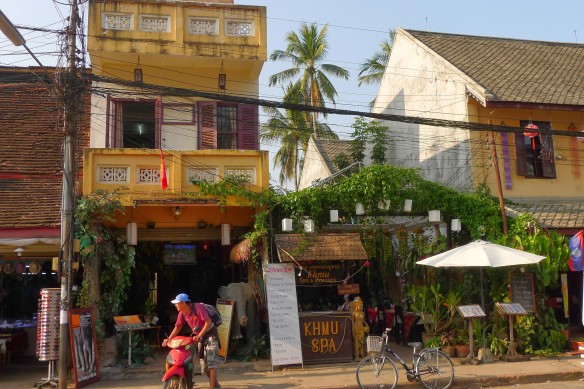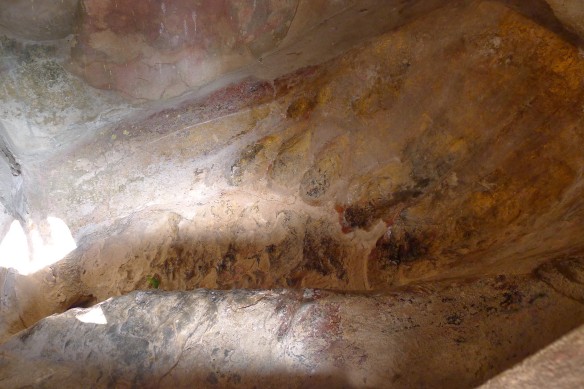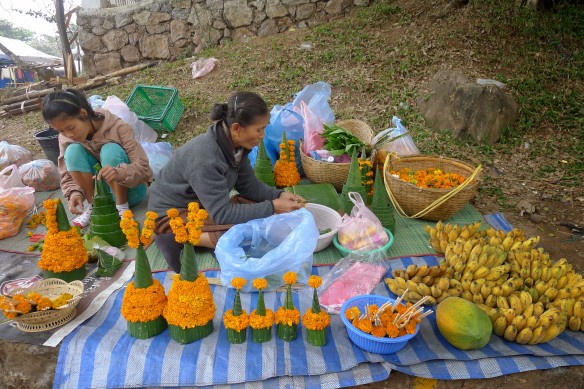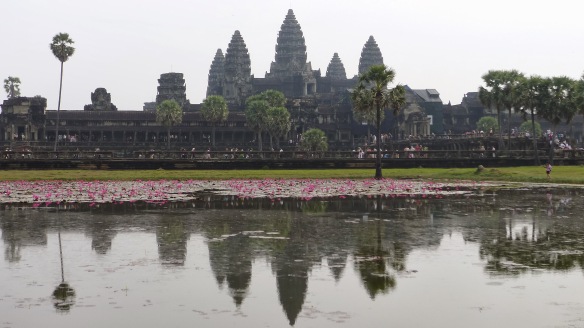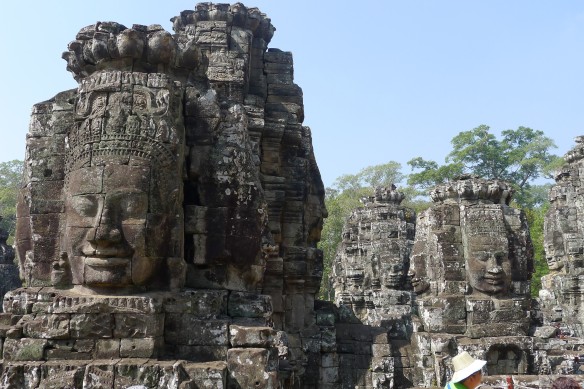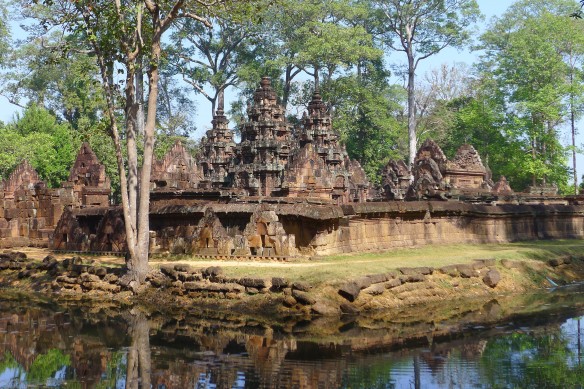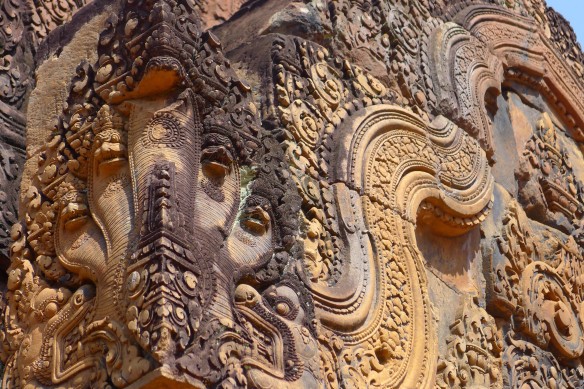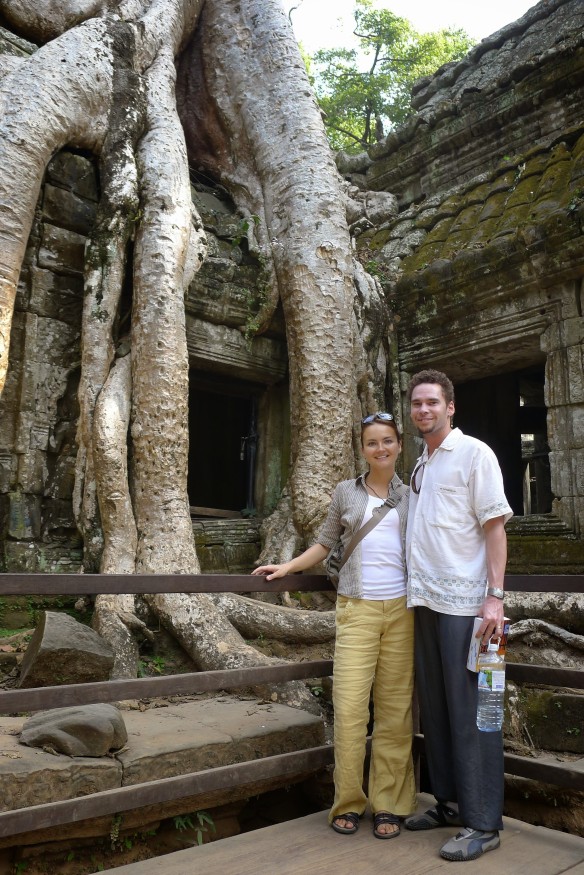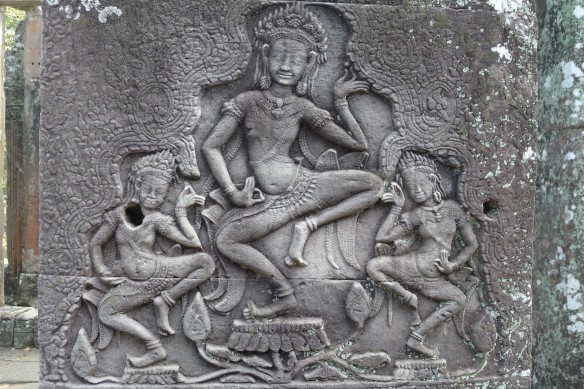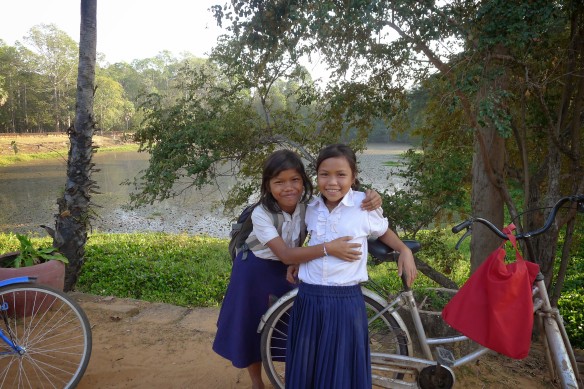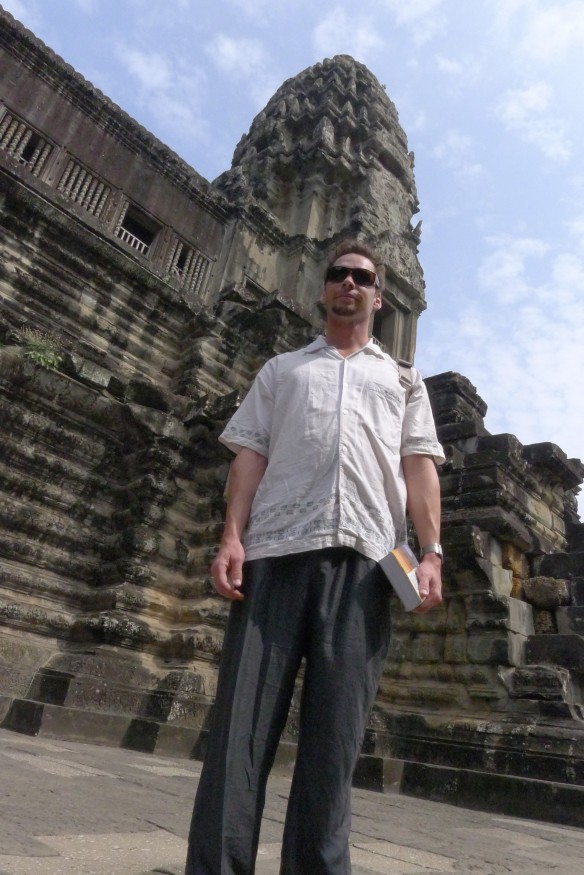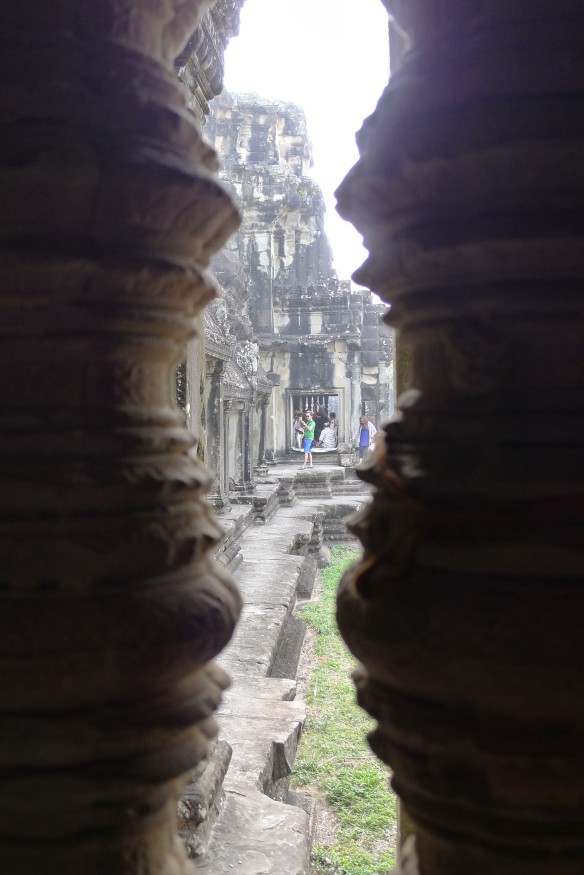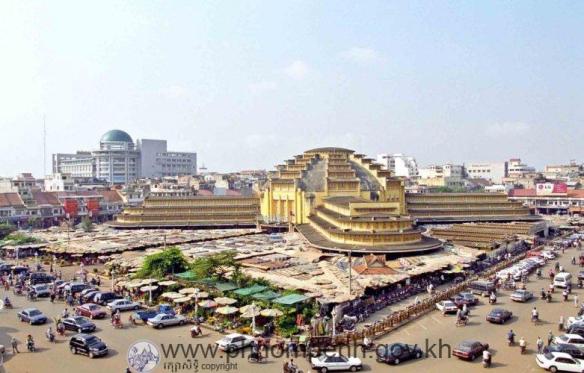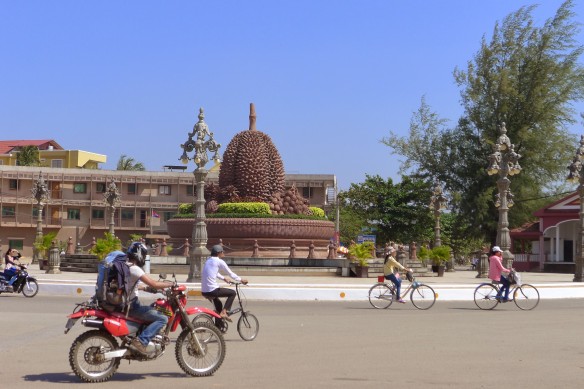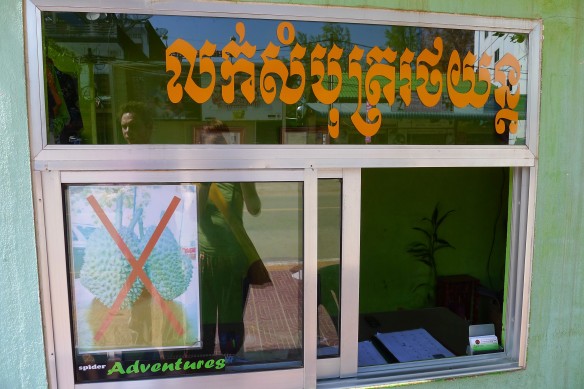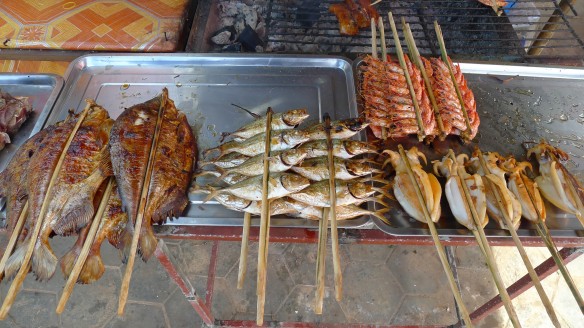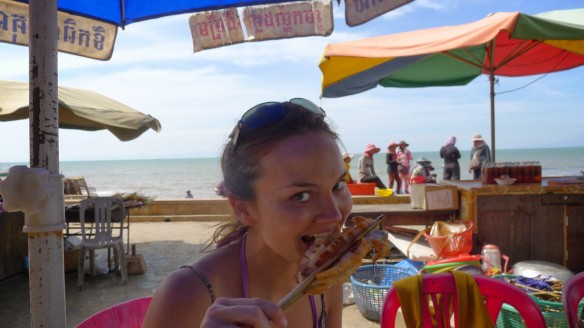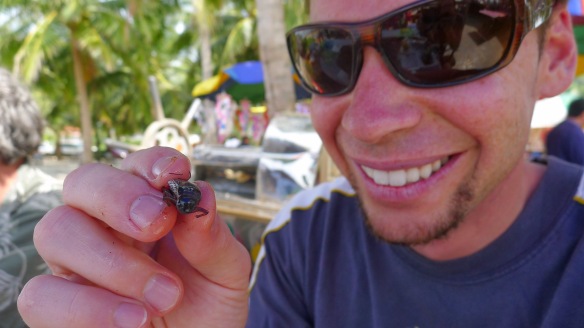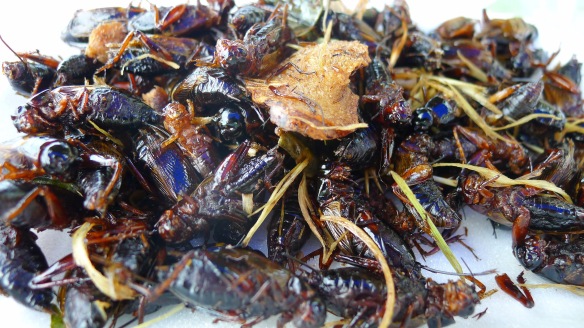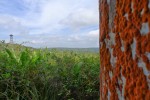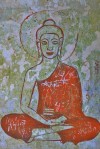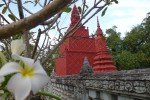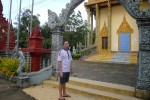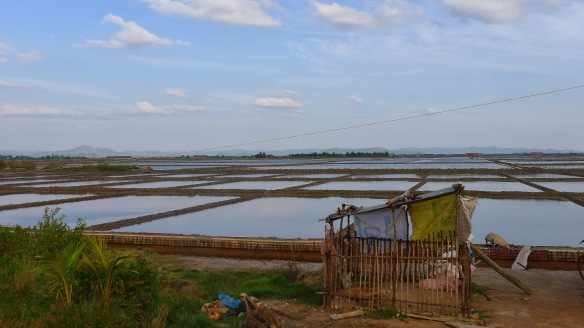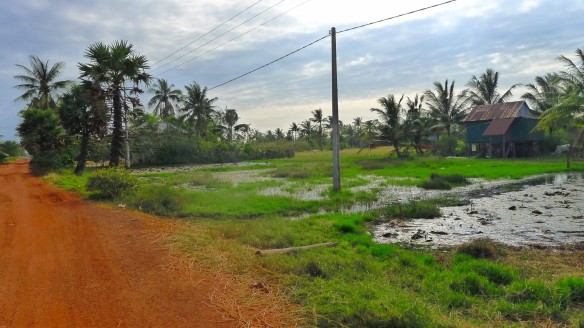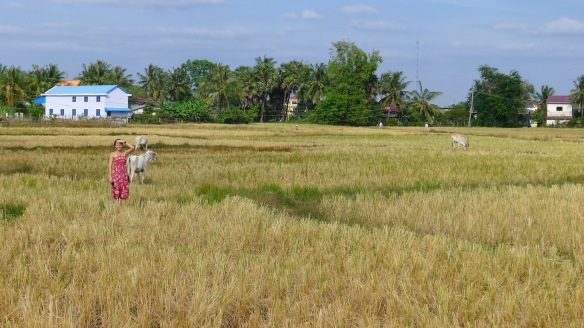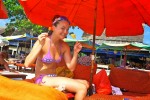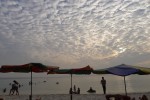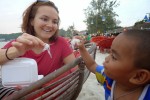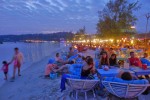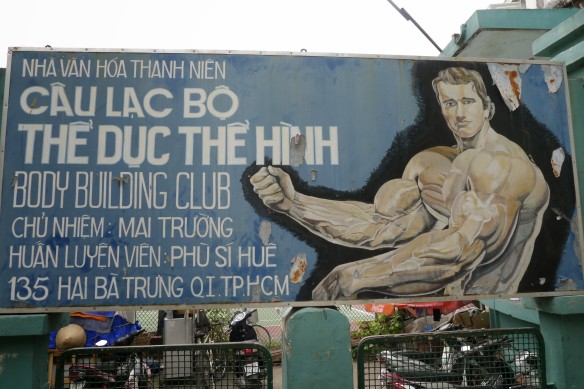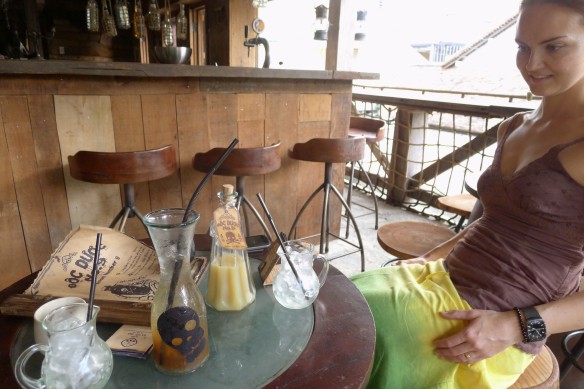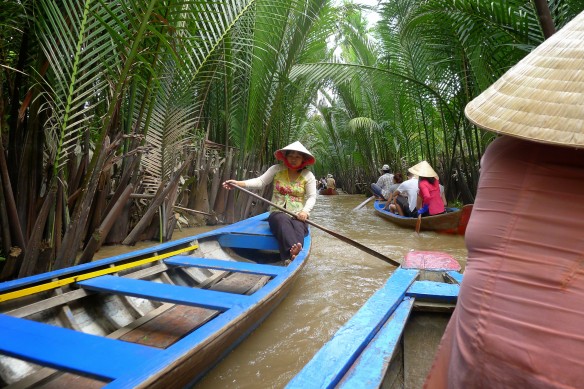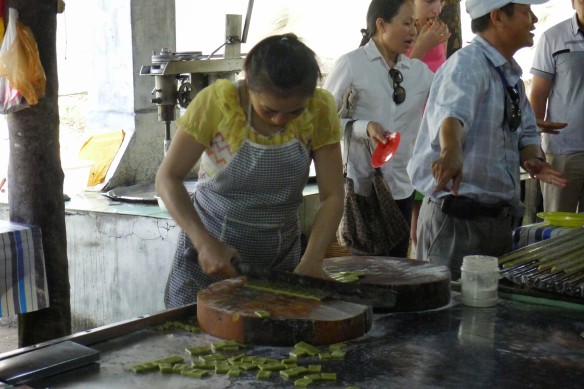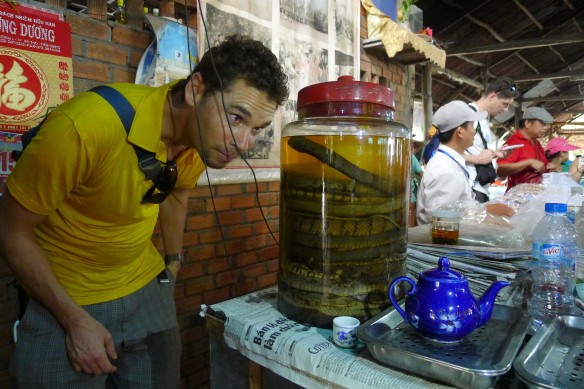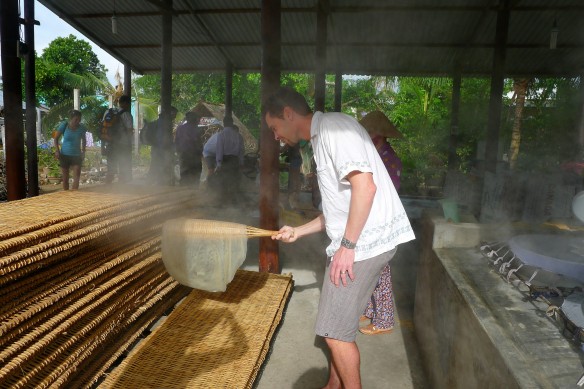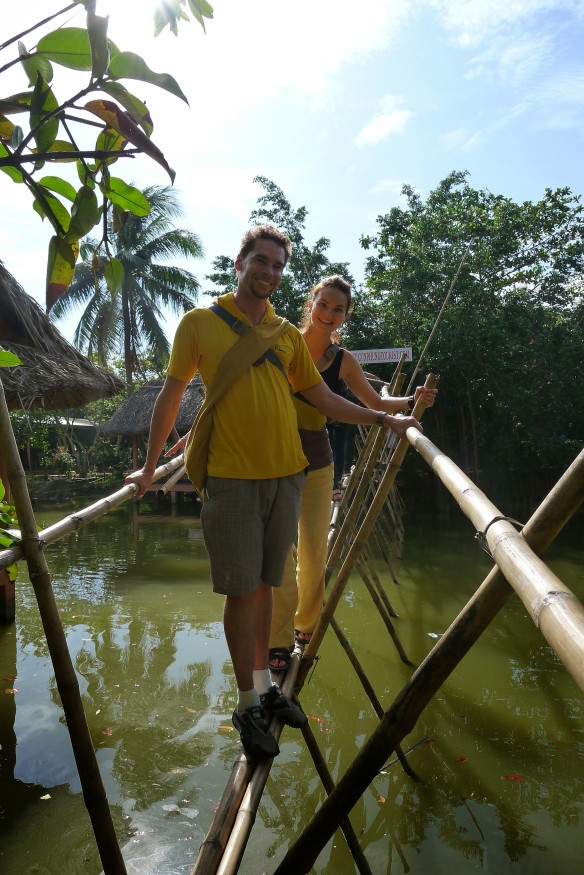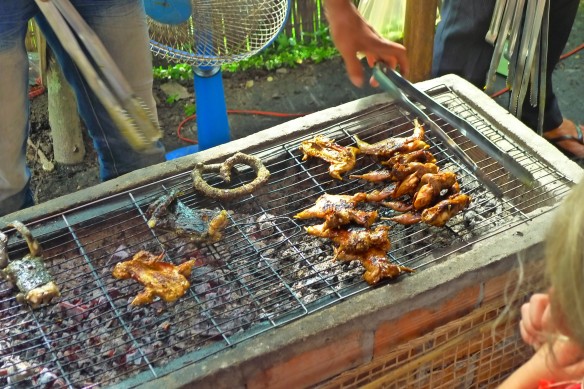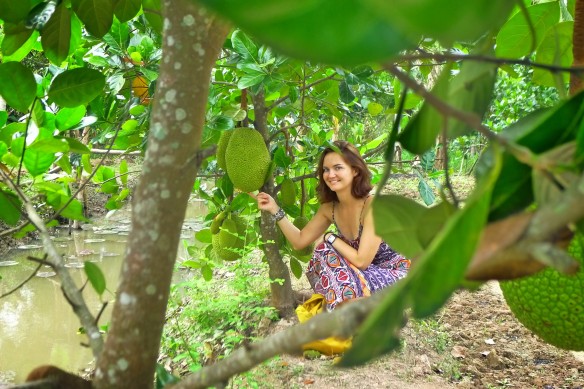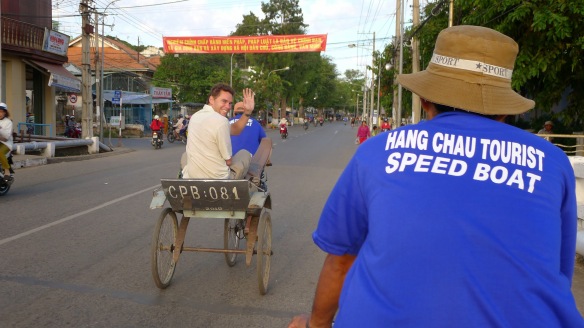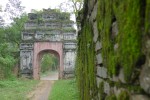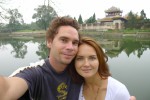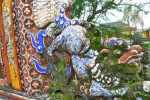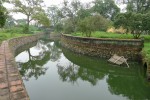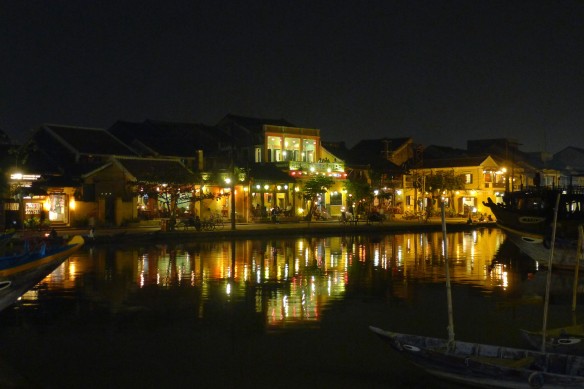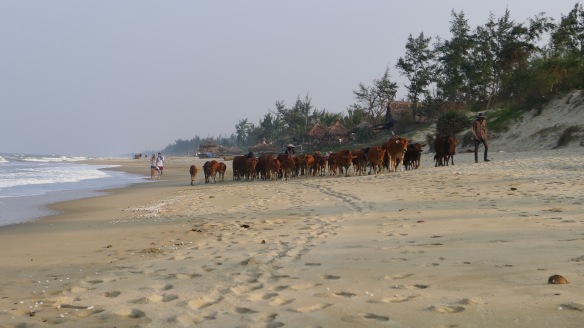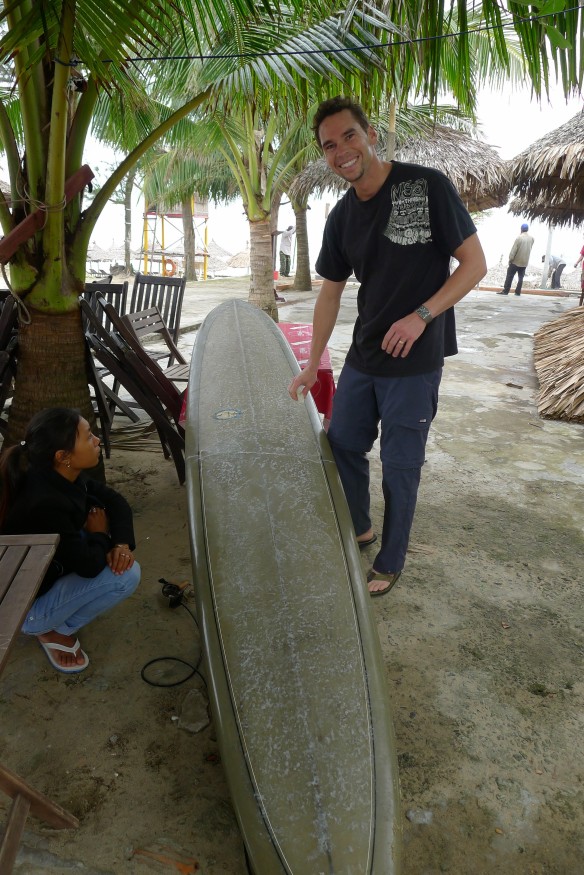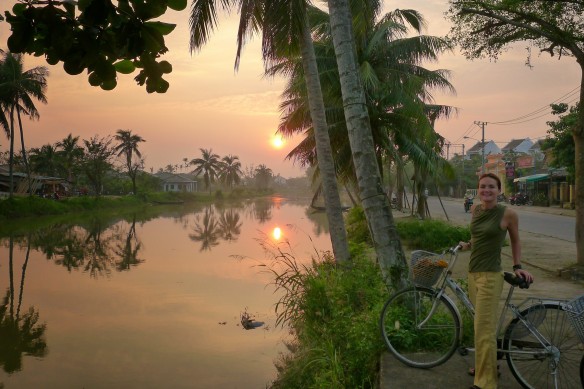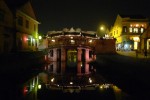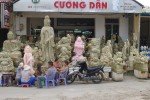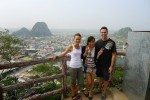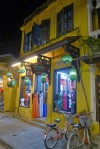On a plane back from Europe last week I watched an episode of Anthony Bourdain’s new show ‘Parts Unknown’ that looked at Tokyo. Two thoughts crossed my mind: a) The man’s liver must have its own zip code and b) *SIGH* Oh how I miss thee Japan.
So, in honor of those amazing ten days we spent in the country of the rising sun, here’s a modest slideshow of snapshots taken with my phone, as by this point in the trip our Olympus had died a sudden humid death in Indonesia. Here are some of our favorite things about Japan:
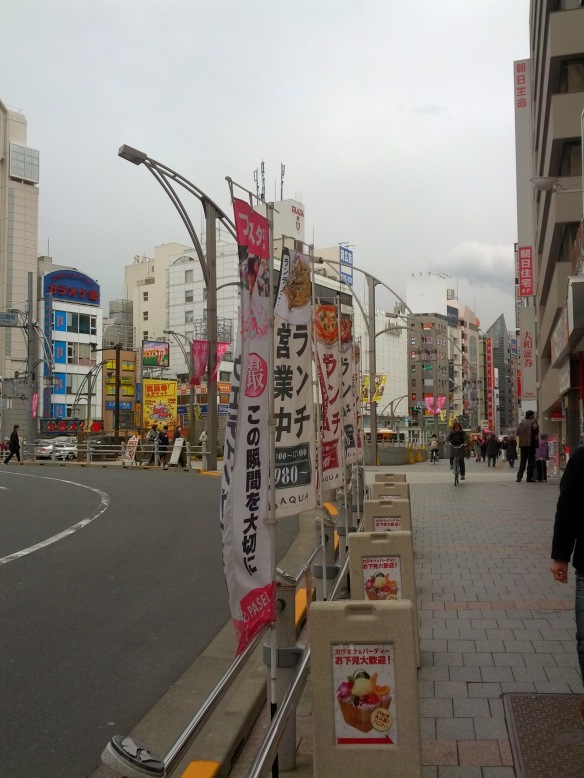
Kanji. Beautiful, strange, calligraphic, mysterious, promise-filled script. There’s no point in watching “Lost in Translation” if you’ve never been there. I had – and it was entirely lost on me (pun intended). Only after immersing yourself in this parallel universe where signs are solely in Japanese even in the airport and navigating streets that even Google seems confused about – only after getting lost in Shinujuku and Roppongi can you really appreciate how simultaneously alienating and liberating the Tokyo experience can be!
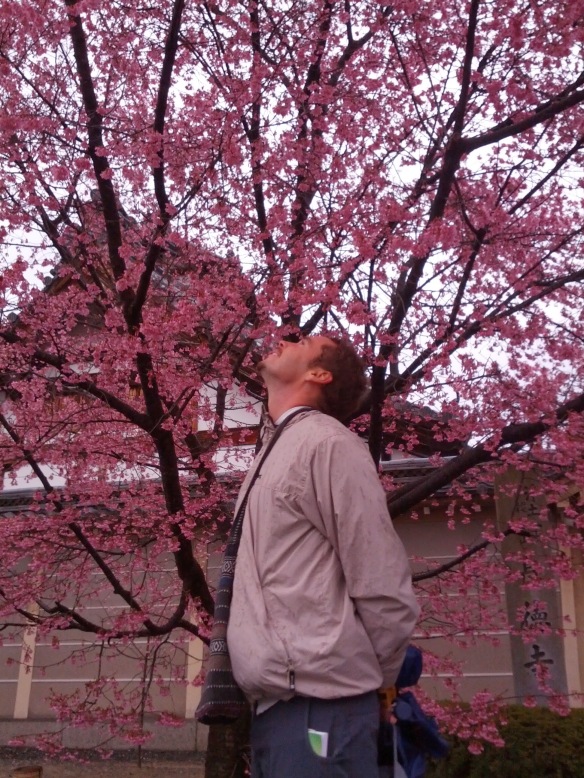
Flower buds. Not just cherry blossoms, but lovely buds in all pastel shades imaginable, juxtaposed on the grim springtime sky. Kyoto is the undisputed capital of cherry blossoms, but what they don’t tell you is that often springtime is sub-zero. In hindsight that’s probably what makes them even more special though…
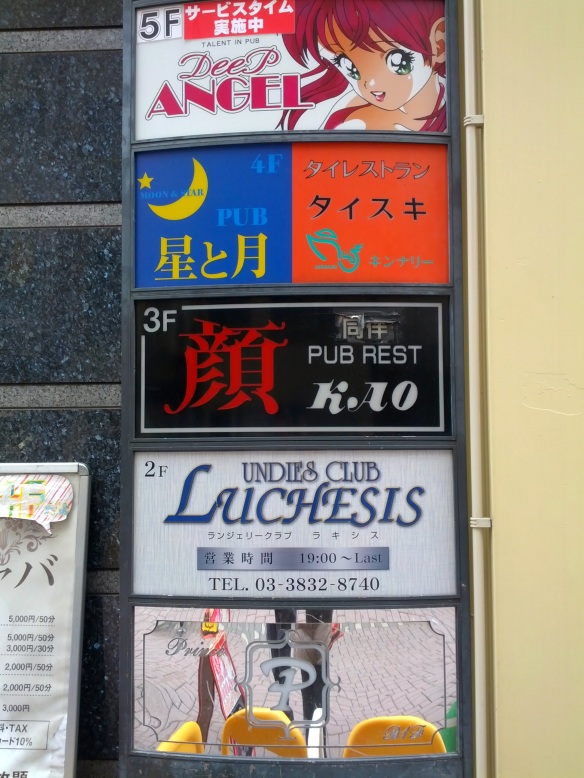
The night life. We only just got glimpses of it, but believe you me, between underwear clubs (sniffing’s on the menu – ’nuff said) and hostess cafes, the options are UN-LI-MI-TED…
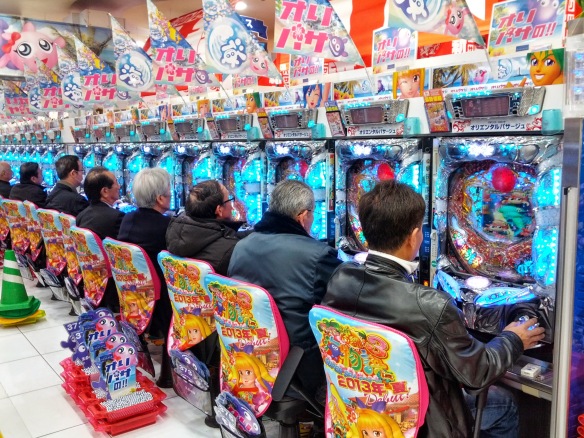
The Creepy. OK – so maybe the creepy factor was not on my list of faves, but it’s certainly noteworthy. Here on display, an older generation of gentlemen, proto-otaku’s if you will, indulging mid-morning in a few (hundred) rounds of arcade games where skimpily dressed manga princesses chase after pixelated dragons. In these dungeons of escapism you can smoke and the music (cartoonish house music that seems perpetually on fast-forward) is blasting at 200 decibels. Eeek!
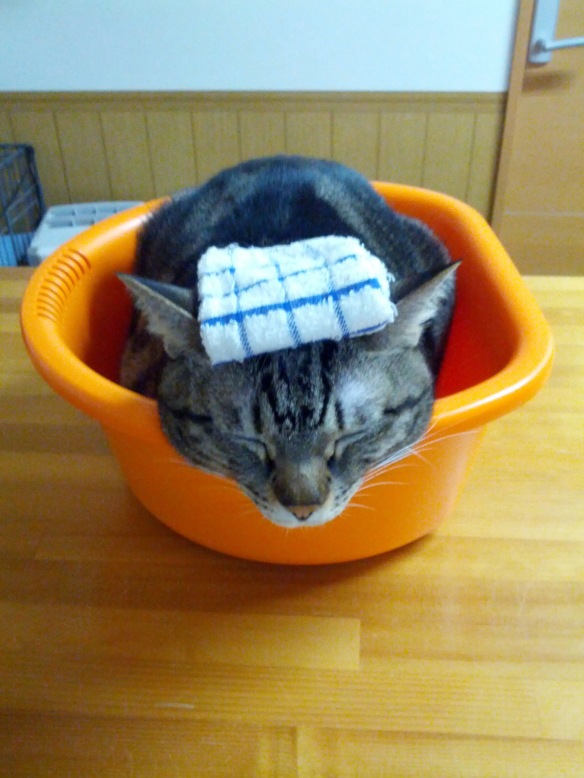
The Kitty Cafes. Cafes where you go to pet cats. And feed cats. And watch cats play. And maybe have a coffee. This here specimen was trained to sit Japanese public bathouse-style with a hand towel folded on her head, in a Kitty cafe we went to in Kyoto. PUHLLLEAZEEE don’t tell Minoush!!!
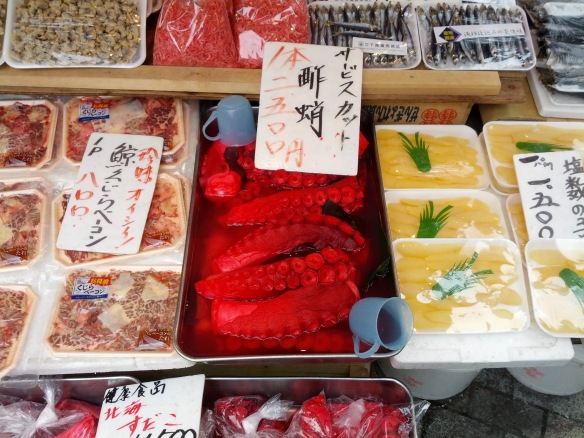
Tentacles. Nobody does tentacles better than Japan. Just look up “Tentacle manga” on YouTube if you don’t believe me. Pretty tasty , too…
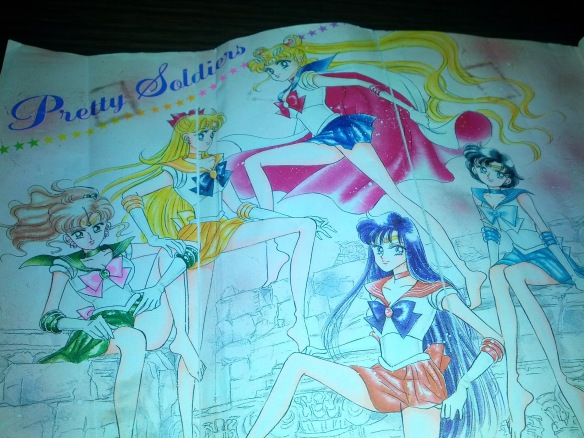
The manga! And not just any manga, but manga that I personally loved and watched in my early teens, dubbed in Romanian, and that opened up a world so alien and playful that it marked me for life. I should come clean and confess that I was Sailor Mercury for Halloween in 9th grade – and she wasn’t even my favorite! But my hair was short and my mom narrow-mindedly (…) refused to buy me a wig. Grrr!

The CUTE! Everything is so darned CUTE! Cupcakes? Cute! Shoes? Cute! Posters? Cute! Backpacks? Cute? Menus? Cute! CUTE CUTE CUTE!!! Our untrained American/European brains could only take so many button-like noses, piggy-tails, miniature animals and big teary eyes before blowing up, so whenever we needed a respite we ducked into a bar and started drinking sake! Which brings me to our other favorite thing :
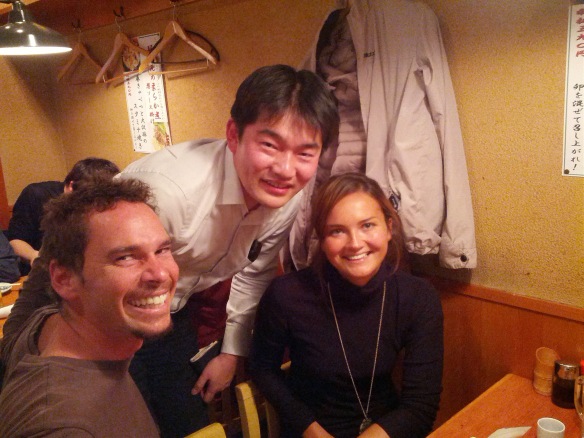
Sake!!! Yessiree sake, especially drunk like water in the company of friends and with delicious food to boot, sake is balm for the homesick soul of any weary traveler. Its also seems to be the poison of choice of Tokyo’s salarymen who leave their offices at 9 PM and head straight for the nearest izikaya to drown their corporate sorrows in barrels of it. God bless their lonely wives stuck at home in distant leafy suburbs, wondering when a cab will come to a stop in front of their well-appointed home and their loved one will roll out of it and crawl on all four to the bedroom for a much needed 2 hour nap before the start of his working day. Kampai to you both!!
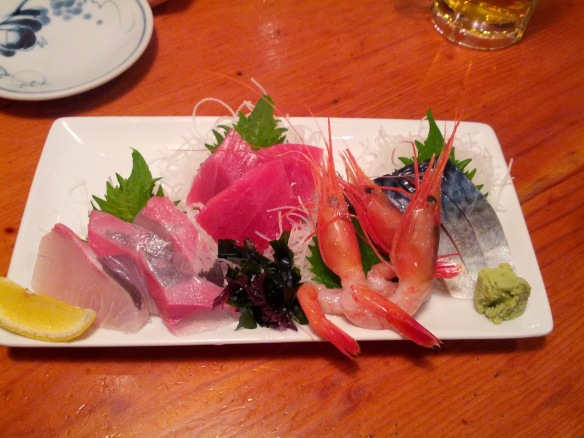
The food. Oh boy, where should I begin? Nothing i can say about it can do it justice. The perfect sushi, the phenomenal steaks, the hotpots, the market food on a stick, everything from toro tuna to squid’s head stuffed with quail egg and finishing off with the most imaginative deserts in the known universe – words fail. Excuse me while I wipe the saliva off my keyboard.
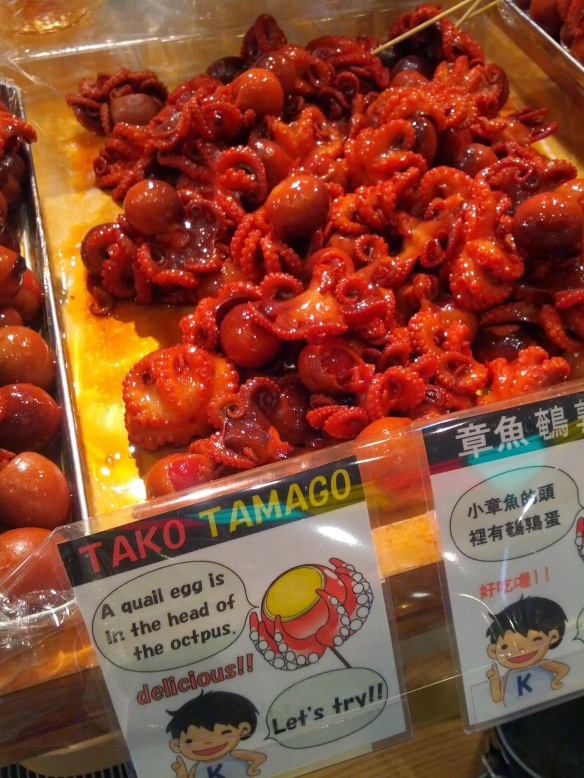
You thought I was kidding about the quail egg in the squid’s head? Enjoy this photo while i’m still busy wiping drool off my computer.
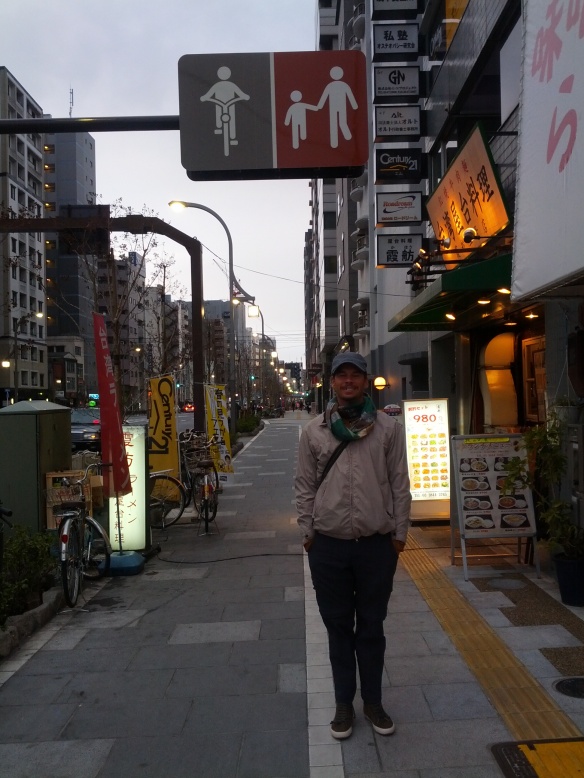
The streets. Nothing is left to chance: garbage is nowhere in sight, even the seediest neighborhoods feel safer than the safest streets in SF and, of course, in case you might be confused, there’s a clearly delineated pedestrian lane on the sidewalk.
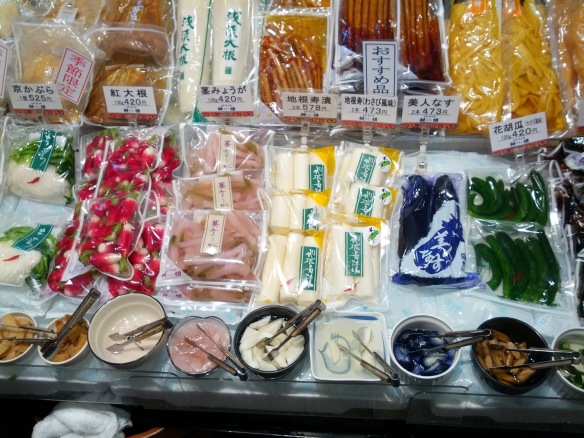
Did i mention the food? THE FOOD! Kyoto’s market was possibly the most spectacular smorgasbord I’ve ever encountered in my adult life. Here on display: pickles. Humble, tiny, packaged pickles – out of this world in taste, color and scrupulousness of display.
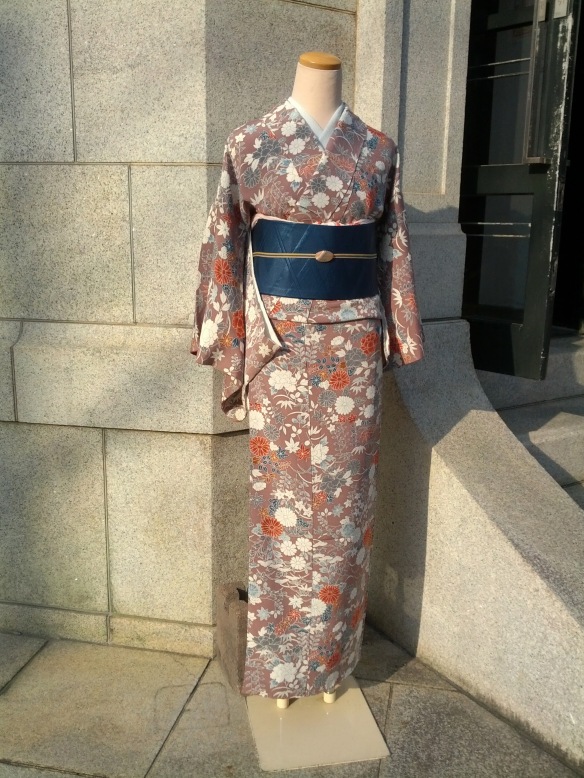
The kimonos. Beautiful garments that women in Kyoto still wear today for special occasions (but not more special than a Sunday afternoon out with your girlfriends). What I liked most about them was their ability to suggest while fully concealing. I wouldn’t say that kimonos are elegant – in fact, they’re rather boxy and constraining – but there’s something in that very bondage of the garment that intrigues and inspires. There’s so much more to it than meets the eye. Compare that with even the skimpiest bikini and I guarantee you, the mystery factor wins out in the end.
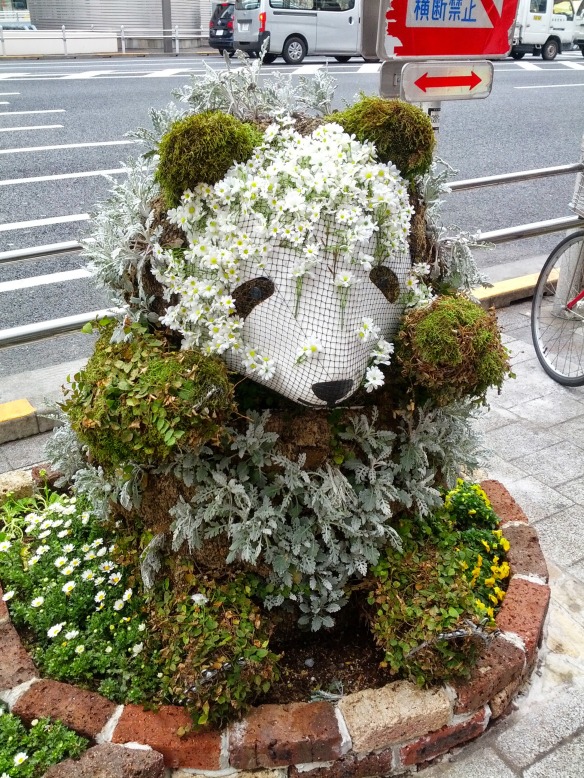
More cute! The cuteness is everywhere – CUTENESS OVERLOAD… ZBZZZ&*#%#&^%#$@…. (internal buzzing sounds accompanied by small plume of smoke rising from our ears)
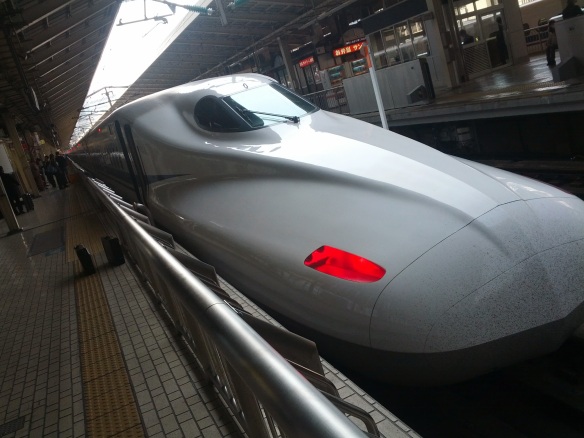
The trains! Yes, oh, yes – those trains, those beautiful, unsullied white trains that carry you across the land at 300 km/hr, noiseless, smooth, impeccably clean and timely to the second.
A few final words about Japan: We spent some of the coldest days on record in Tokyo this spring, coming straight from 100 F in Indonesia and we wore EVERYTHING we had layered over each other. We suffered through the worst cold in a decade (Ed) and vicious raw-egg-based food poisoning (me). We slept in both a re-furbished former factory with paper walls (not paper-THIN, but paper-made) and in a five star hotel on which we spent more in one night than we spent the entirety of our trip (note to self: reserve rooms ahead if you’re going to be in Kyoto on Cherry Blossom Festival opening weekend). We ate supermarket rice balls and $100 steaks. We separated, stripped naked, scrubbed ourselves raw with hand towels and dunked our bodies alternately in freezing and boiling waters.
Would we do it all again? HECK YEAH! Arigato Gozaymas Japan! And please stay weird.

